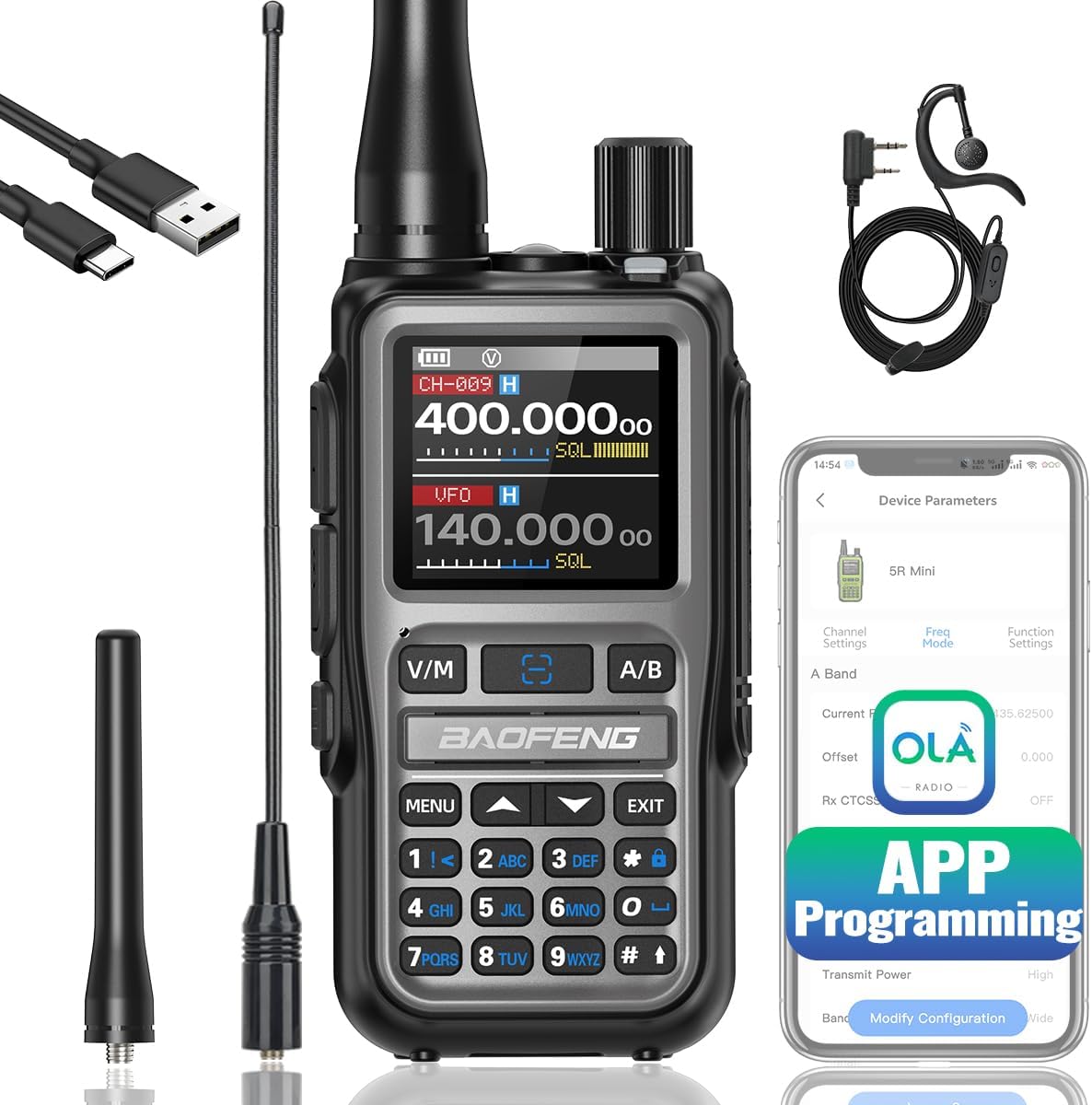
The Kenwood TS-450SAT is a solid-state HF transceiver designed for amateur radio operators who want reliable performance, flexibility, and a well-rounded feature set. Originally introduced in the early 1990s, this rig continues to earn respect among hams for its solid build quality and dependable performance across the 160 through 10 meter amateur bands. Despite its age, the TS-450SAT still holds relevance today for operators seeking a classic HF radio that performs well without the price tag of more modern SDR equipment.
Design and Build Quality
The TS-450SAT features a sturdy metal chassis with a well-organized front panel. Its layout is intuitive, and the knobs and buttons feel responsive and durable. The large, easy-to-read LCD display presents key information like frequency, mode, and signal strength clearly. The radio is compact for an HF rig of its era, making it a practical choice for both fixed and portable setups. Its cooling system, including a built-in fan, is efficient and keeps the radio operating within normal temperature limits, even during extended use.
The "SAT" in the model name indicates the inclusion of an internal automatic antenna tuner, which is a significant convenience. It allows for quick matching of antennas across a wide range of impedances, minimizing the need for external tuners or constant manual adjustment.
Receiver Performance
The receiver in the TS-450SAT is one of its strong suits. It offers excellent sensitivity and dynamic range for its class. The radio is capable of pulling in weak signals with minimal background noise, which is essential for DXing and contesting. The digital signal processing available in the IF stage helps clean up received audio by reducing noise and improving selectivity. Operators often comment on the clean, crisp receive audio, especially when using external speakers or quality headphones.
The radio features selectable IF filters and a notch filter, which are helpful for working in crowded band conditions. The automatic gain control (AGC) is adjustable, and its performance is smooth, avoiding the harsh "pumping" effect seen in some older rigs. The noise blanker works effectively against common electrical interference sources, though some users may find it less effective against newer forms of RF noise that have become more prevalent in recent years.
Transmit Capabilities
On transmit, the TS-450SAT delivers up to 100 watts of output power on all HF bands from 160 to 10 meters. The audio quality is generally regarded as excellent, with a clean and natural-sounding voice transmission when paired with a good microphone. The speech processor can be enabled to enhance punch and clarity during voice operation, which is useful in pile-ups or noisy band conditions.
CW operators will appreciate the full break-in (QSK) capability, which allows for seamless operation and quick response. The keying is smooth, and the built-in electronic keyer can be easily configured. For digital modes, the radio can be adapted using an external sound card interface, though it lacks built-in USB or CAT control features found in newer rigs.
Tuner and Antenna Options
The internal automatic antenna tuner is one of the most valued features of the TS-450SAT. It is capable of tuning a wide range of antenna mismatches, making it easy to switch bands quickly and operate without constantly fiddling with external tuning units. This is particularly useful for operators using wire antennas or multi-band verticals.
For those who require more advanced tuning or work with non-resonant antennas, the radio supports connection to external tuners. The rear panel includes standard RF connectors and accessory jacks that make integration with amplifiers, tuners, and other station equipment relatively straightforward.
User Interface and Controls
The TS-450SAT offers a straightforward user interface. Its front panel includes separate knobs for volume, RF gain, and tuning, along with dedicated buttons for band selection, mode change, and memory storage. The menu system is somewhat limited by modern standards but remains easy to navigate for anyone familiar with traditional HF rigs.
Memory channels, split frequency operation, RIT/XIT, and scanning functions are all present and functional. While the rig does not include a modern waterfall display or spectrum scope, experienced operators will find its features more than sufficient for day-to-day operation.
Reliability and Longevity
Kenwood is known for producing durable amateur radio gear, and the TS-450SAT is no exception. Many units are still in use today, decades after their initial release. The components are of high quality, and the internal layout is modular, which simplifies maintenance and repair. Common replacement parts are still available on the used market, and the radio’s popularity ensures a strong user community for troubleshooting and support.
While the TS-450SAT lacks some features of newer radios such as built-in USB interfaces, real-time DSP filtering, or integrated digital mode support, it continues to perform reliably for voice, CW, and digital modes with the right external accessories.
Final Thoughts
The Kenwood TS-450SAT stands as a testament to solid engineering and thoughtful design. Its combination of dependable receiver performance, quality transmit audio, built-in tuner, and robust construction make it a favorite among both veteran and newer hams looking for a proven HF transceiver. While it may not offer the cutting-edge features of modern SDR rigs, it provides excellent value and reliable performance for everyday HF operation.
For those who value simplicity, durability, and performance over flashy extras, the TS-450SAT remains a worthy addition to any shack. Whether you're chasing DX, running nets, or just ragchewing with friends, this radio delivers dependable communication across the bands.

